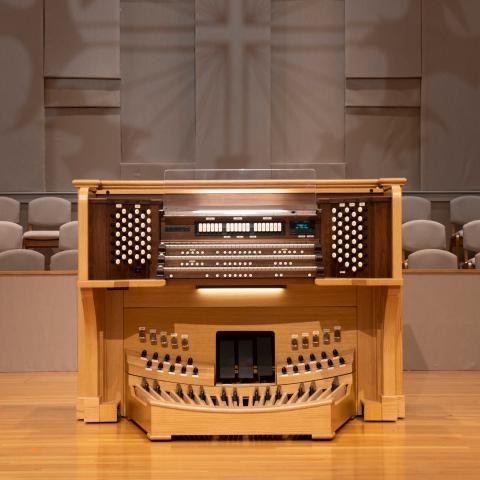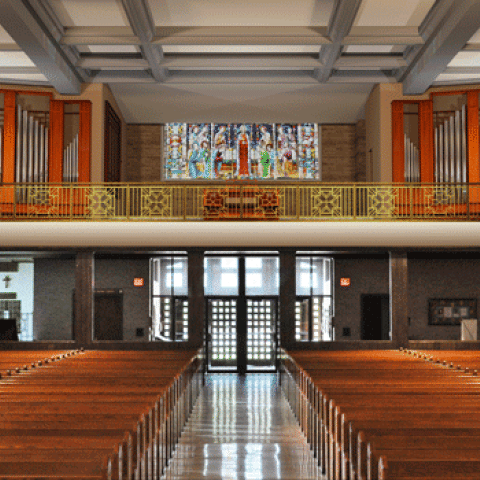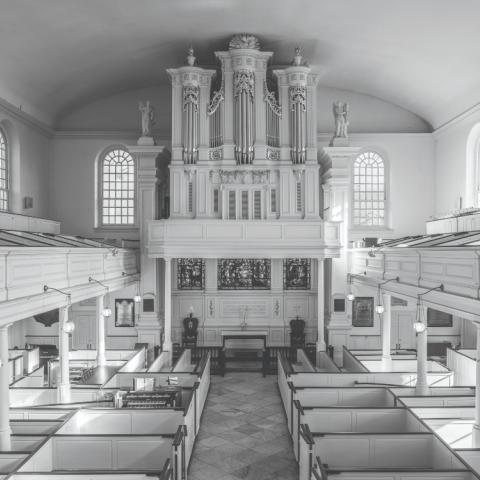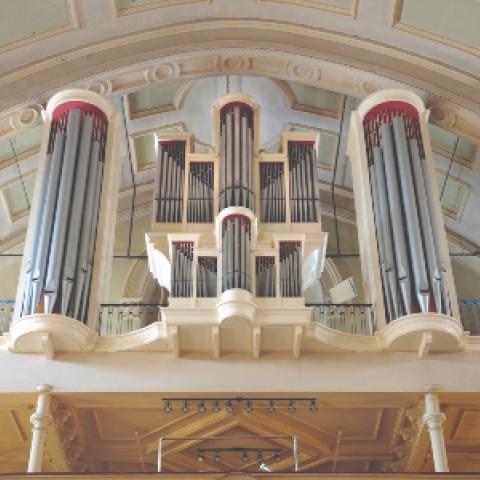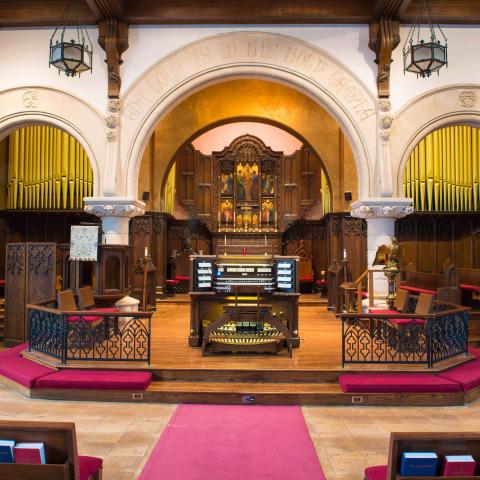
In early July, Berghaus Pipe Organ Builders, Bellwood, Illinois, finished the first in a planned series of rebuilding phases for the 1959 M. P. Möller organ at St. Paul’s Episcopal Church, Peoria, Illinois. The leathers in the four-manual, 45-rank instrument have reached the end of their useful life. The church elected to perform the work in stages.
In April, Berghaus removed the entire Swell division for a comprehensive rebuild, which included releathering the pouchboards, pitmans, and primaries, and releathering the reservoirs and original shade pneumatics. After cleaning and repairing the pipes and installing new slide tuners, Berghaus returned to the church in June to clean the chambers and chests, reinstall all components, and restore the tonal finishing of the division.
Berghaus has carried out restorative repairs at St. Joseph Catholic Church (now St. Joseph/Immaculate Conception Parish), Chicago, Illinois, as its 1892 Geo. S. Hutchings organ had suffered from wind sag, metal fatigue in pipes, and construction detritus. In April, technicians removed most of the pipework from the church for cleaning and repairs. A crew spent one week at the church cleaning construction debris from the chambers, chests, and remaining pipes. Sliders were removed from the chests and cleaned and lubricated to eliminate problems caused by construction dust. A new Zephyr blower was supplied.
For information: http://berghausorgan.com.

